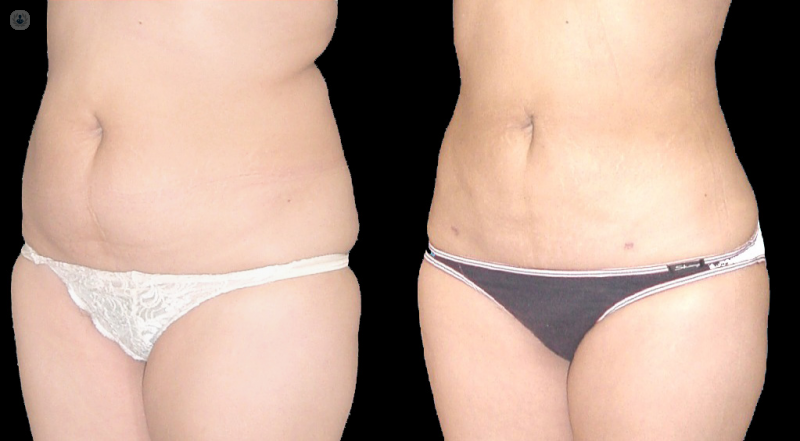

What is liposculpture?
In plastic, aesthetic and reconstructive surgery, liposculpture is the operation that is performed to eliminate fat deposits located between skin and muscle. The purpose of the operation is to permanently redesign the contour of the body. It is performed in different areas of the body, most commonly the abdomen, thighs, buttocks, arms and jowls.

Liposculpture is usually performed under general anaesthesia. However, another option is non-surgical or non-invasive liposculpture, which does not require anaesthesia or, in some cases, requires only local anaesthesia.
Why is it done?
It should be emphasised that this operation is not a surgical means of tackling obesity, becoming slimmer or losing weight. Rather, it is a way to directly eliminate localised fat.
Liposculpture is designed to eliminate accumulations of stubborn fat that are otherwise difficult to eliminate, even in patients who follow a healthy lifestyle with balanced diet and exercise. Hence, patients who undergo liposculpture are of normal weight or overweight.
What does it involve?
Liposculpture involves making a few incisions measuring less than 1 cm. A cannula is introduced through the incisions and suction applied to remove the fat from the area. In some cases, the removed fat is reimplanted in other areas, such as the buttocks. The duration of the surgery will depend on which areas are treated and the volume of fat, but it is usually less than 4 hours.
Preparation for liposculpture
If the patient is in good health, he/she does not need to undergo medical investigations before the liposculpture. If however the patient has a bleeding tendency, they will have to undergo medical investigations before liposculpture, to include heart rate and blood pressure measurements, and possibly blood tests.
The surgeon may recommend that the patient not take any anticoagulant medication for at least 10 days before the intervention. In addition, the specialist determines the most appropriate compression garment for the patient to wear after liposculpture.
Post-operative care
In the post-operative period, the patient will have to rest for about three days, take antibiotic therapy and wear a compression bandage or compression garment. The garment must be worn for 2 to 4 weeks; however at day 4 or 5 the patient can resume his normal activities and at day 10 he can resume exercise in a gradual manner.
